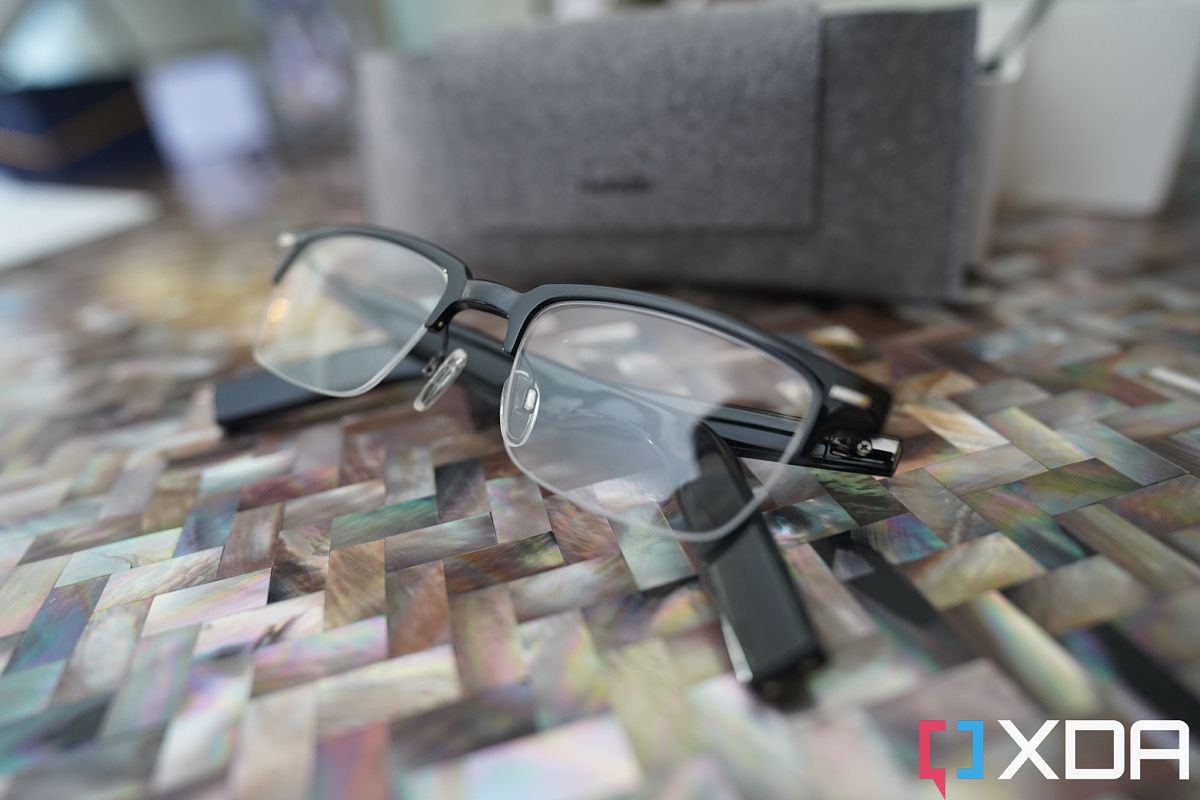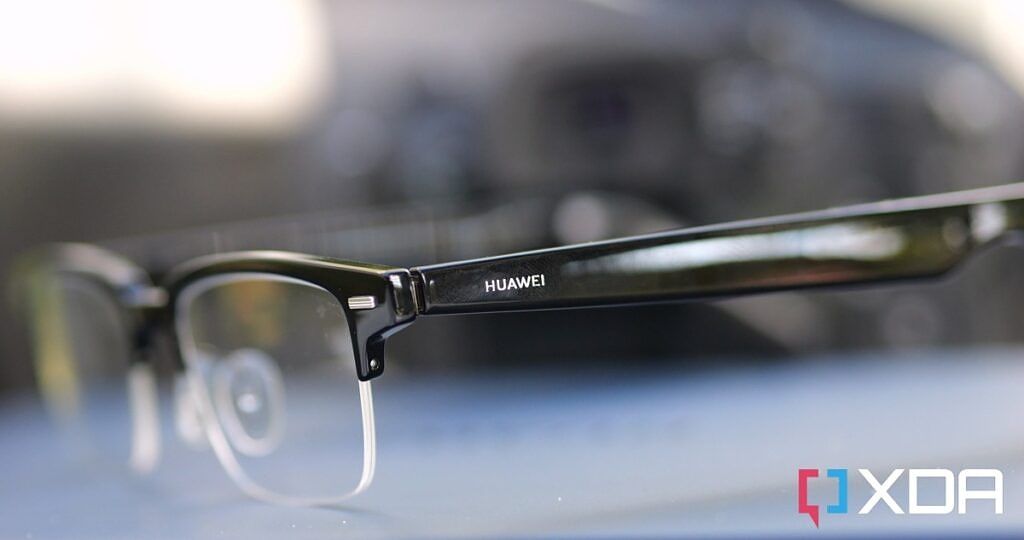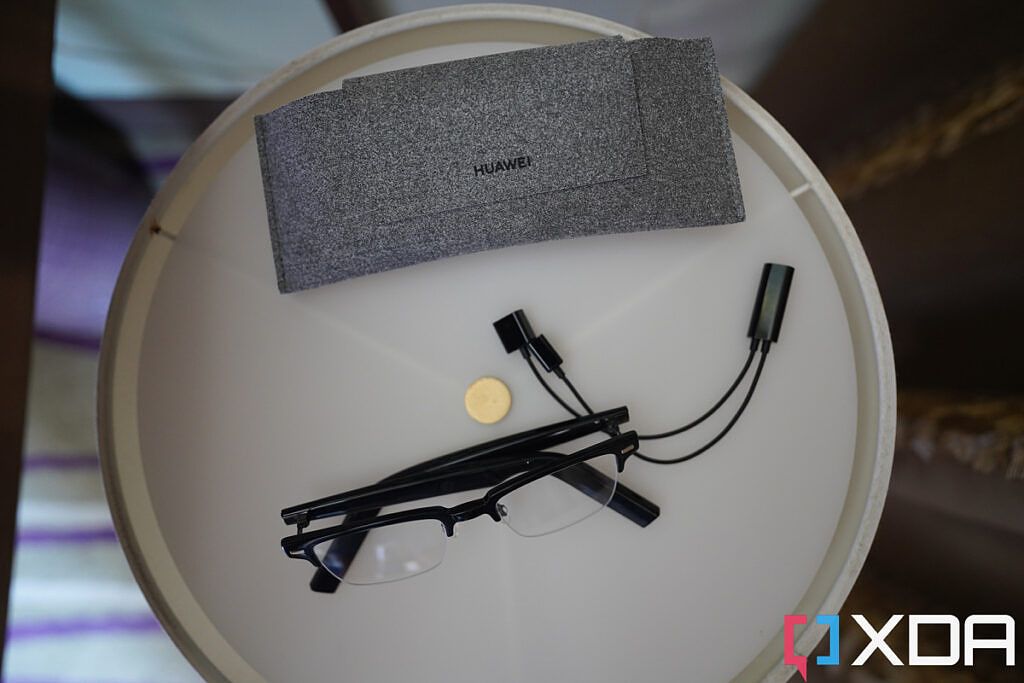Huawei launched a series of flashy products at the IFA trade show in Berlin over the weekend, including a new upper mid-range phone with a whopping 60MP selfie camera, a new flagship laptop running Intel's 12th generation Intel processor, and the Huawei Watch Fit D that can measure blood pressure via a miniature pump inside the band. However, one product that didn't get any stage or show booth time was the Huawei Eyewear. These are a pair of "smart glasses" with an open acoustic system and microphone built into the arms so the wearer can listen to audio or take phone calls while wearing the glasses, without needing to access their smartphone.
To be clear, this is not Huawei's first venture into this category. The Chinese tech giant had partnered with South Korean eyewear brand Gentle Monster for at least two editions of smart sunglasses. These new pair, however, no longer feature the Gentle Monster branding. According to a Huawei rep, "this one is just made by Huawei." The reason Eyewear didn't have much of a presence at all at IFA was that Huawei apparently hasn't decided if these will actually launch globally. We as media persons were not given any press information on them -- both Ben Sin and I were simply given a pair to test unannounced. However, a quick online search shows that these are already on sale in Japan and Malaysia, and listed on Huawei's international English site. The model that both Ben and I received to test is the Rectangle Semi-Frame Glasses, and there are three other styles as seen below.
About this article: Huawei supplied both myself and Ben Sin with pairs of the Huawei Eyewear for review. The company had no input into the contents of this article. Huawei did sponsor my travel and accommodation to attend the IFA trade show, alongside other media persons. This article was written by both myself and Ben Sin.
Previous Huawei Eyewear products all came with a bulkier case that also doubled as the charging dock for the glasses. Not this time, as the new Eyewear comes in a soft fabric case, and a charging cable.
The charging cable is a bit clunky in practice: it's a female-to-female cable, with one end accepting USB-C input, and the other end splits into two pogo pin plugs that attach to the end of the arms. A full charge powers the glasses for about five hours of audio playback or four hours of phone calls, and about 16 hours of standby time. I have only tested these glasses for half a day so far, but a full hour of listening to music only drained about 23% of the battery, so the numbers seem to add up. I found that the cable was very easy to disconnect, which made charging these glasses difficult at times, especially if you need to move them after plugging them in.
The eyeglasses weigh 38.8g, and the lens can be swapped for prescription lenses. There are touch panels on both arms, just next to the Huawei logo. You tap or swipe on them to control audio playback, volume, taking calls, and voice assistant.
The glasses sport two speakers and a microphone on each arm, and they work together to produce audio and that sounds surprisingly good for an open ear design. The audio quality is of course not going to beat any reputable pair of wired or wireless earbuds, as the speaker system lacks bass for that extra oomph. However, the highs are crisp and mids are tight -- with Ben finding that airy pop songs and Ziggy Stardust-era David Bowie play nicely through the glasses. The microphones are used to reduce wind noise during calls. Huawei's website says it designed an intelligent algorithm to reduce noise leakage so that it's harder for people next to the wearer to hear the audio.
My colleague Ben Sin says that he only got to test these for half a day, but former XDA contributor TK Bay confirmed he couldn't hear the audio coming from the glasses despite sitting right next to him. Ben also tried taking a call, and the other party said she heard me loud and clear when he was indoors, but outdoors in a crowd, it was hard for her and Ben to hear each other. That's just a shortcoming of these open-air acoustics systems that we will have to accept. When I tested this outside with XDA TV host Alex Dobie, he was able to hear the music that I was listening to when I had the audio level above 75%. I also noticed that the Eyewear will vibrate a lot at louder volumes, though it's not hugely visible.
For the most part, when wearing these in a quiet outdoor environment, like Berlin on a Sunday morning, Ben said that he was able to hear podcasts and music perfectly fine even as he was zipping around at relatively high speed on an electric bicycle. In a noisier city, though, which is Hong Kong at almost all hours of the day, he wouldn't be able to hear the audio much. Neither of us was able to trigger Google Assistant with the long-press gesture, but this may be a bug that will be fixed later because Ben says he was able to access Google Assistant and Siri with the previous pair of Huawei Eyewear released in 2020.
In terms of features, there's not a whole lot else these glasses can do. The AI Life app can be paired with them, though the only feature I found interesting was "Greetings". This feature will enable the glasses to talk to you throughout the day, which can be... odd. It explained why the glasses said "Good afternoon" to me in an American accent when I put them on, but I don't really understand the reason for the feature to exist. Maybe to help you keep track of time?
The glasses are also equipped with a trio of sensors -- accelerometer, gyroscope, capacitance sensor -- that allow the glasses to turn on or off automatically, and stop or start music playback when taking them on or off. In my experience, I found that this worked quite well, and I was surprised at how accurate it was when detecting being placed on my head. They're comfortable to wear for long periods of time too, and I kept them on me for quite a while when listening to music just to try them out. What I especially love is how open they are, as you can hear your surroundings while still listening to your music in a (relatively) private environment.
As mentioned, Huawei did not give media persons any official press information on this product, so we have no idea when or if these are getting released outside of Japan and Malaysia, nor do I have official pricing. In Malaysia, a Google search shows the exact pair I tested retail for around the Malaysian currency equivalent of $240. If these ever get released in other markets, I'd expect the price to be in this range. To be clear, these aren't necessarily "smart glasses" akin to the likes of the Lenovo Glasses T1. These only play audio, and are more akin to a new form factor for headphones or wireless earphones.









